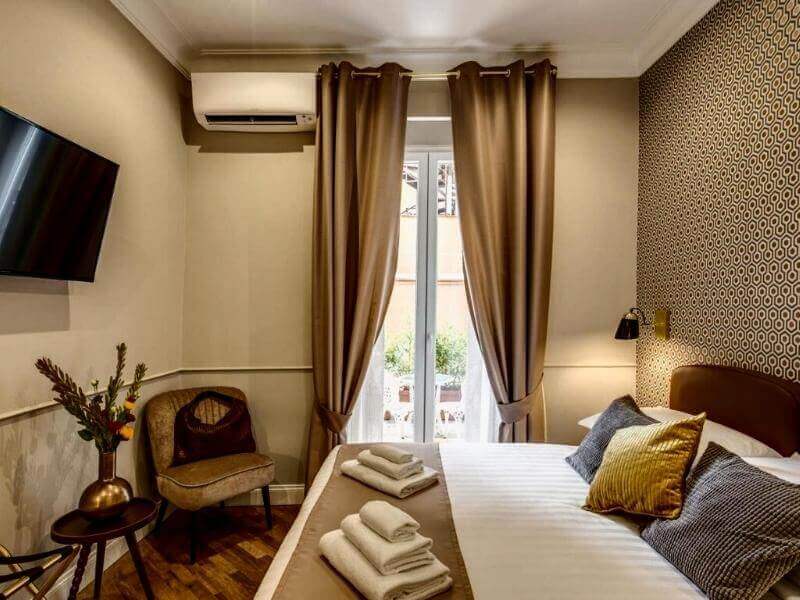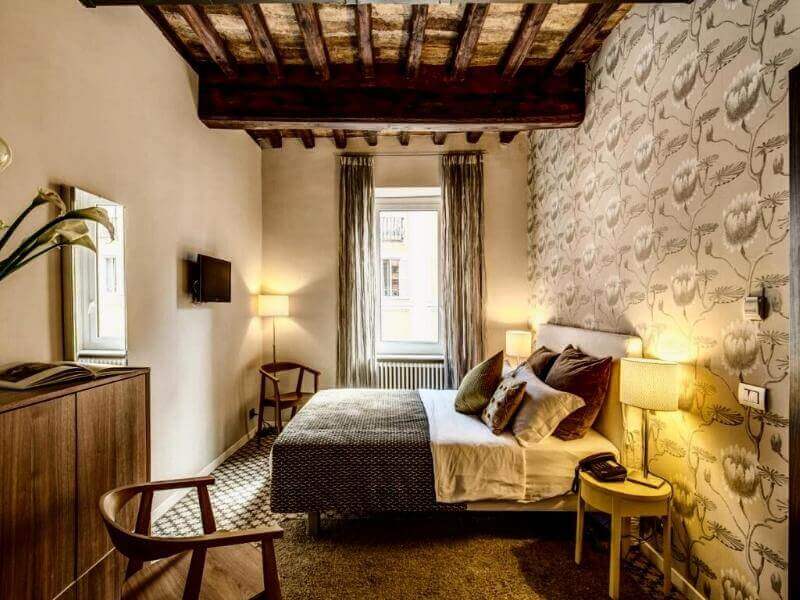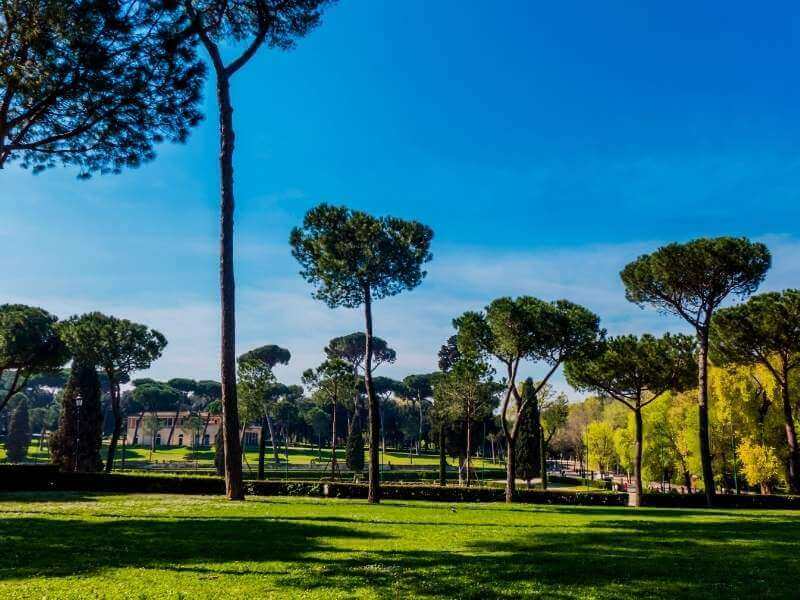The Spanish Steps in Rome are one of the most famous staircases in the world and an absolute “must-see” among Rome’s attractions.
The “Scalinata di Trinità dei Monti,” as it is called by the locals, was built between 1723 and 1725. The travertine staircase has always served as a direct link between the Piazza di Spagna and the French church of Santa Trinità dei Monti.
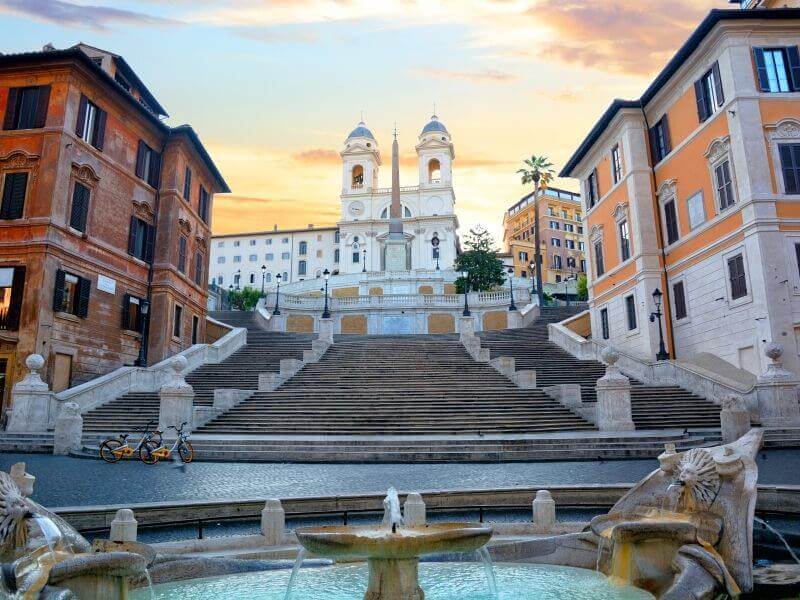
Autor
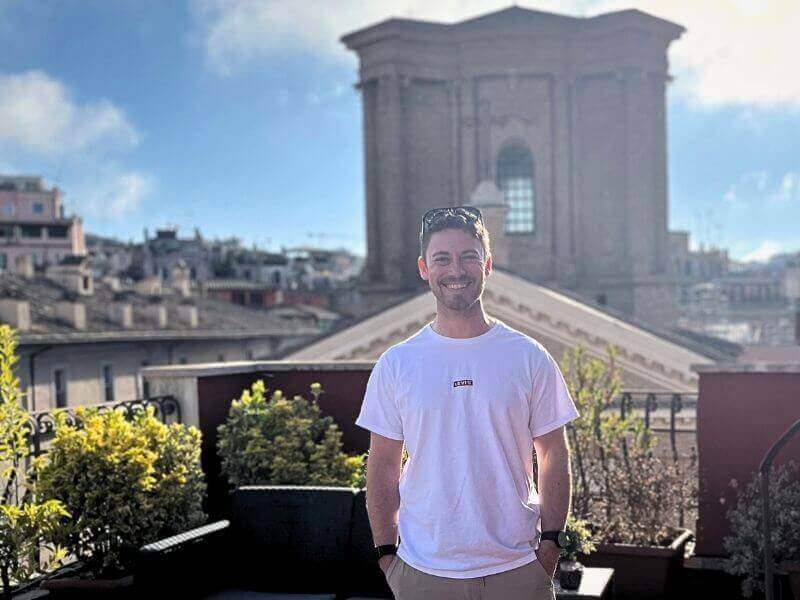
Welcome!
Welcome to Rome Tourist!
My name is Sebastian.
For me, Italy’s capital is one of the most beautiful cities in Europe!
I love the city’s amazing architecture and am particularly interested in its fascinating history!
Basti
At GetYourGuide you will find an extensive selection of tickets and tours in Rome.
The best thing about it: you save valuable time as you don't have to wait in line at many sights.
Most tickets can be canceled free of charge and the company has an excellent reputation!
Address:
Piazza di Spagna, 00187 Roma
Transportation:
Subway: Spagna stop (line A)
Nearby:
Piazza di Spagna (0,0 km)
Villa Borghese (0,8 km)
Pantheon (1,1 km)
Piazza Navona (1,3 km)
Most people spend:
1 hour
History of the Spanish Steps
The builder of the 136-step staircase in Rome was Francesco de Sanctis, an Italian Baroque architect. Two years earlier, he had won an architectural competition launched by Pope Innocent XIII.
De Sancti’s first design, which included several trees and sculptures along the Roman steps, was initially rejected by the Pope. The fact that the French Sun, King Louis XIV, financed the construction made it difficult to realize the project.
As the staircase led up to “his” French church, Louis had his own ideas about the monument. According to legend, the stairs were originally intended to be called the “French Staircase”.
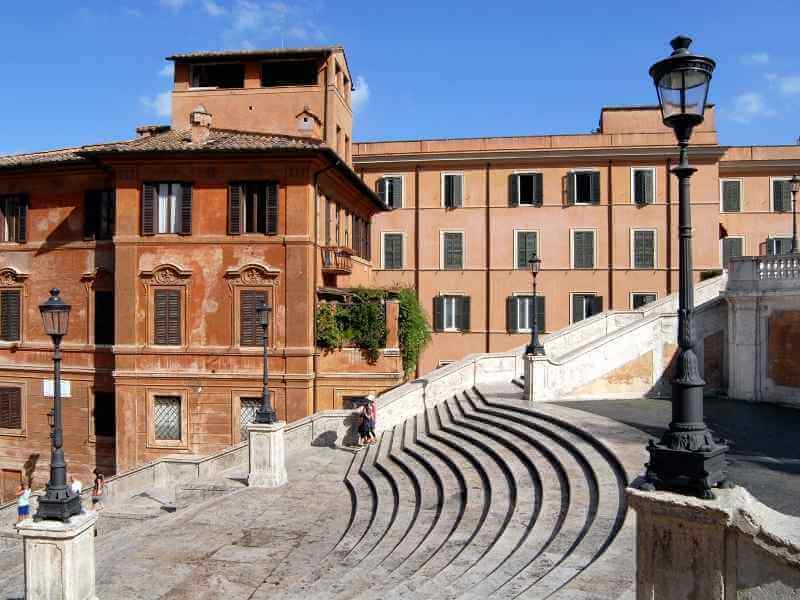
The resulting power struggle inevitably led to a conflict of interest between King Louis and Pope Innocent. The latter did not want to accept the planned equestrian statue of the French king as a demonstration of France’s protective power, ultimately leading to a rift.
With a length of 68 meters, a width of 40 meters, and a height difference of 23 meters, the planned construction of the Spanish Steps finally came to fruition.
The three plateaus of the staircase are intended to symbolize the Holy Trinity, the church of Santa Trinità dei Monti, which was consecrated afterward.
The Church of Santa Trinità dei Monti
The French church of Santa Trinità dei Monti is just a 20-minute walk from Villa Borghese and the world-famous art gallery Galleria Borghese art gallery.
The church is located above Pincio Hill and can be visited free of charge. Masses are also read here in French every Sunday at 11 am.
The church was built between 1502 and 1587, and there is a 14-metre-high obelisk from Egypt in front of the church. However, this was only erected in 1789 by Pope Pius VI. However, the hieroglyphs on it were only added in ancient times.
The highest plateau, next to the church, offers a beautiful view of the Spanish Steps and the Piazza di Spagna. Amid all the tourists, there are also numerous street artists. You will also witness the unfortunately very pushy street vendors.
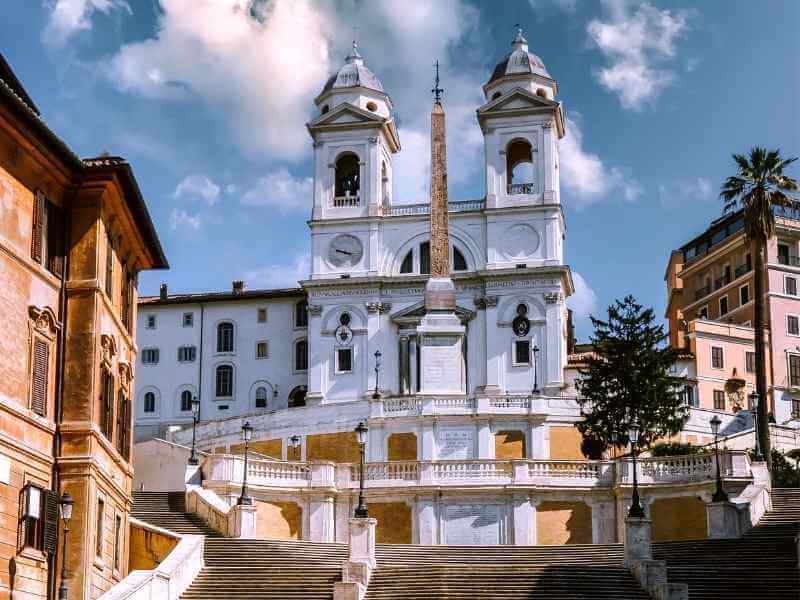
Fontana della Barcaccia
Just below the Spanish Steps on the Piazza di Spagna is the “Fontana della Barcaccia” – or the Barcaccia Fountain. This famous fountain in Rome was designed by none other than the father (Pietro Bernini) of the famous Gian Lorenzo Bernini.
The shape of the fountain, built in 1629, is modeled on a ship. Legend has it that this idea came about when the Tiber flooded.
A boat that had washed ashore here is said to have been the sole inspiration for Bernini. Today, the fountain is a great photo opportunity and a meeting place for many Romans.
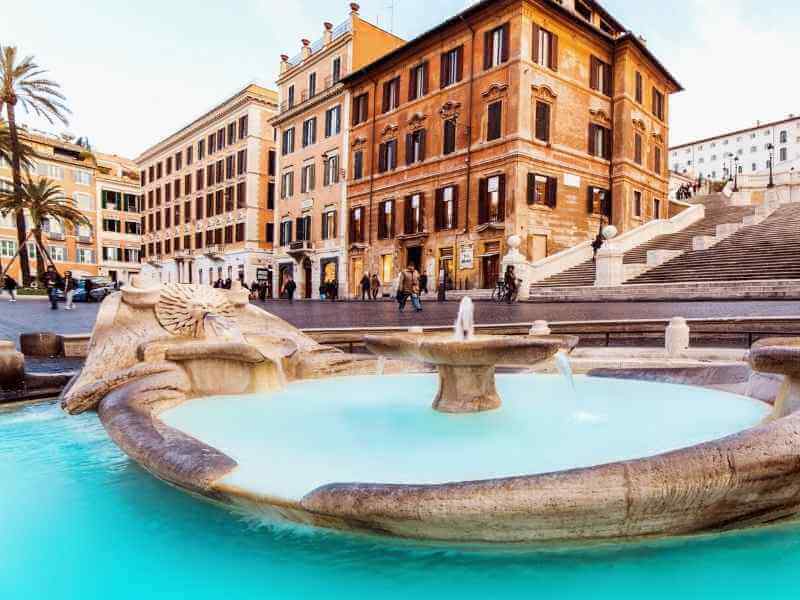
Azalea flowers on the Spanish Steps
To this day, the Spanish Steps in Rome are one of the most significant buildings of the late Baroque and Rococo periods. Even though Rome has banned people from sitting on the grand staircase since 2019 (fines of up to 400 euros!), you should look at it.
The baroque work of art is awe-inspiring at the end of April. On December 8 and at the end of Easter, the Spanish Steps are immersed in a veritable flowerbed of azaleas.
Even the Pope personally visits the Spanish Steps on the day of the Immaculate Conception of Mary (December 8).
This magnificent backdrop has also served as the setting for several fashion shows in Rome. Superstars such as Kim Kardashian have already posed here!
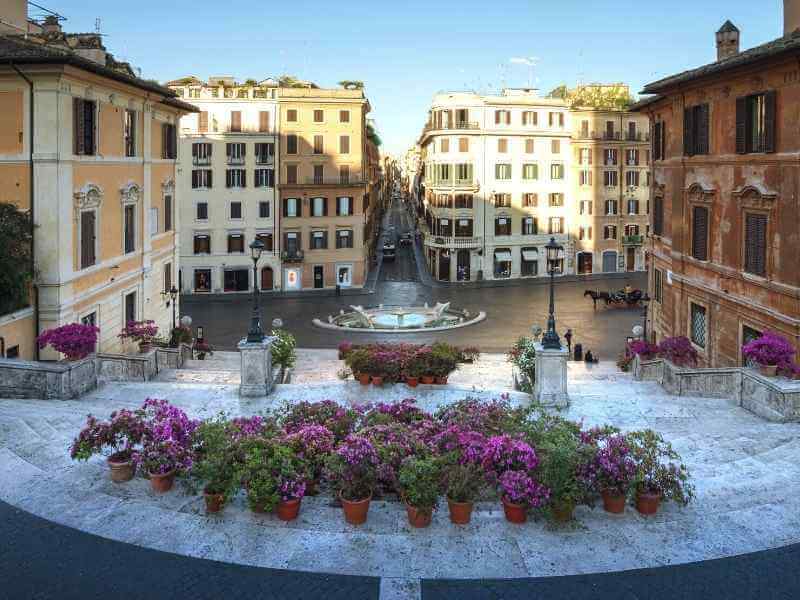
Our Hotel Recommendations near Spanish Steps:
Have you already found accommodation?
We have researched the best hotels nearby! -> Hotels near Spanish Steps Rome
Guest reviews: 8.7 (Excellent)
Where are the Spanish Steps located?
The Spanish Steps are located near the Spanish Embassy in Piazza di Spagna. As you can guess, this is how the Spanish Steps got their name.
There are numerous street cafés, ice cream parlors, and restaurants near the Spanish Steps. If you want to buy new clothes and have the necessary change, you can also shop in Rome’s most luxurious shopping district.
Exclusive boutiques like Gucci, Prada, Versace, and others are here. The Keats-Shelley Museum offers the perfect opportunity for those who prefer a cultural education. The museum provides literary treasures from an entire era!
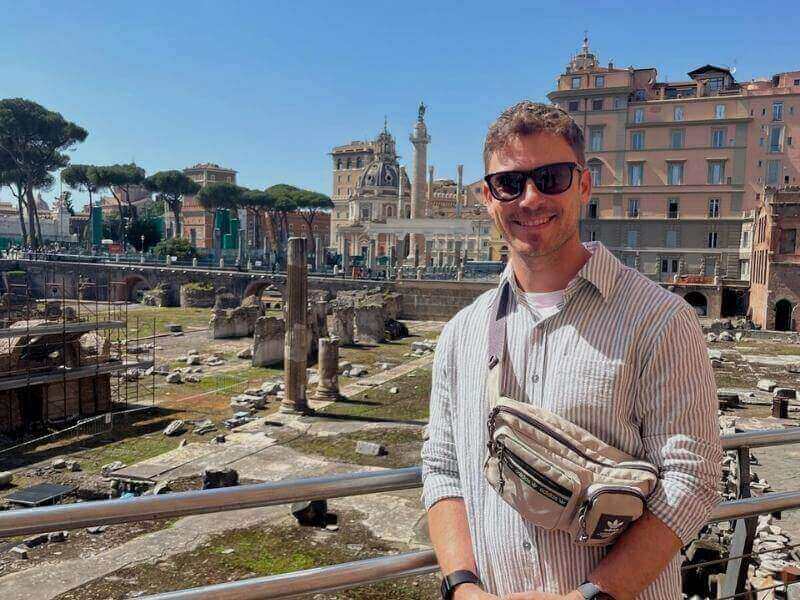
Sebastian
Welcome to Rome Tourist!
My name is Sebastian.
For me, Italy’s capital is one of the most beautiful cities in Europe! I love the city’s amazing architecture and am particularly interested in its fascinating history!
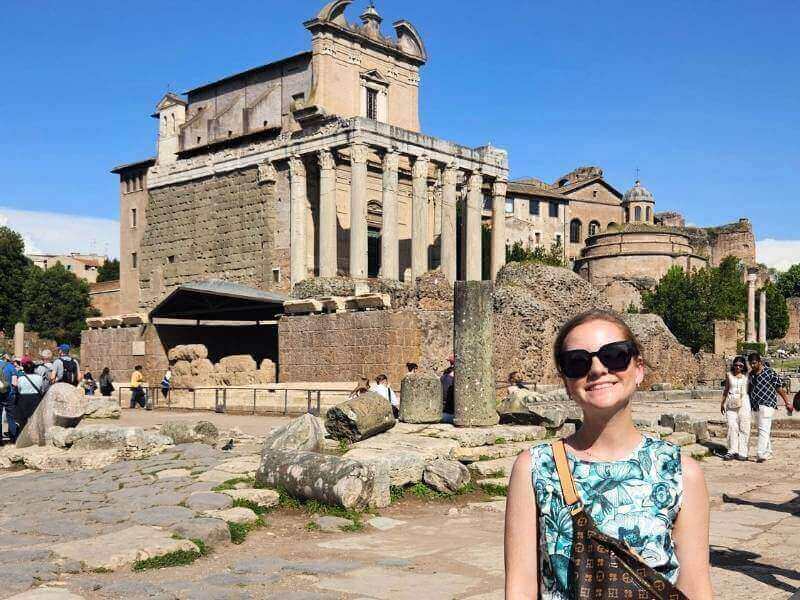
Allie
Hello everyone!
I’m Allie and I love the great food and relaxed atmosphere in Rome! My favorite thing to do is stroll through the streets of the Eternal City with a coffee to go.
Did you know that …
By purchasing through our links, you support us at no additional cost.
Thank you for your support. ♥️
via GetYourGuide
via Booking.com
Find Flights to Rome
via Skyscanner
These articles may also interest you:


